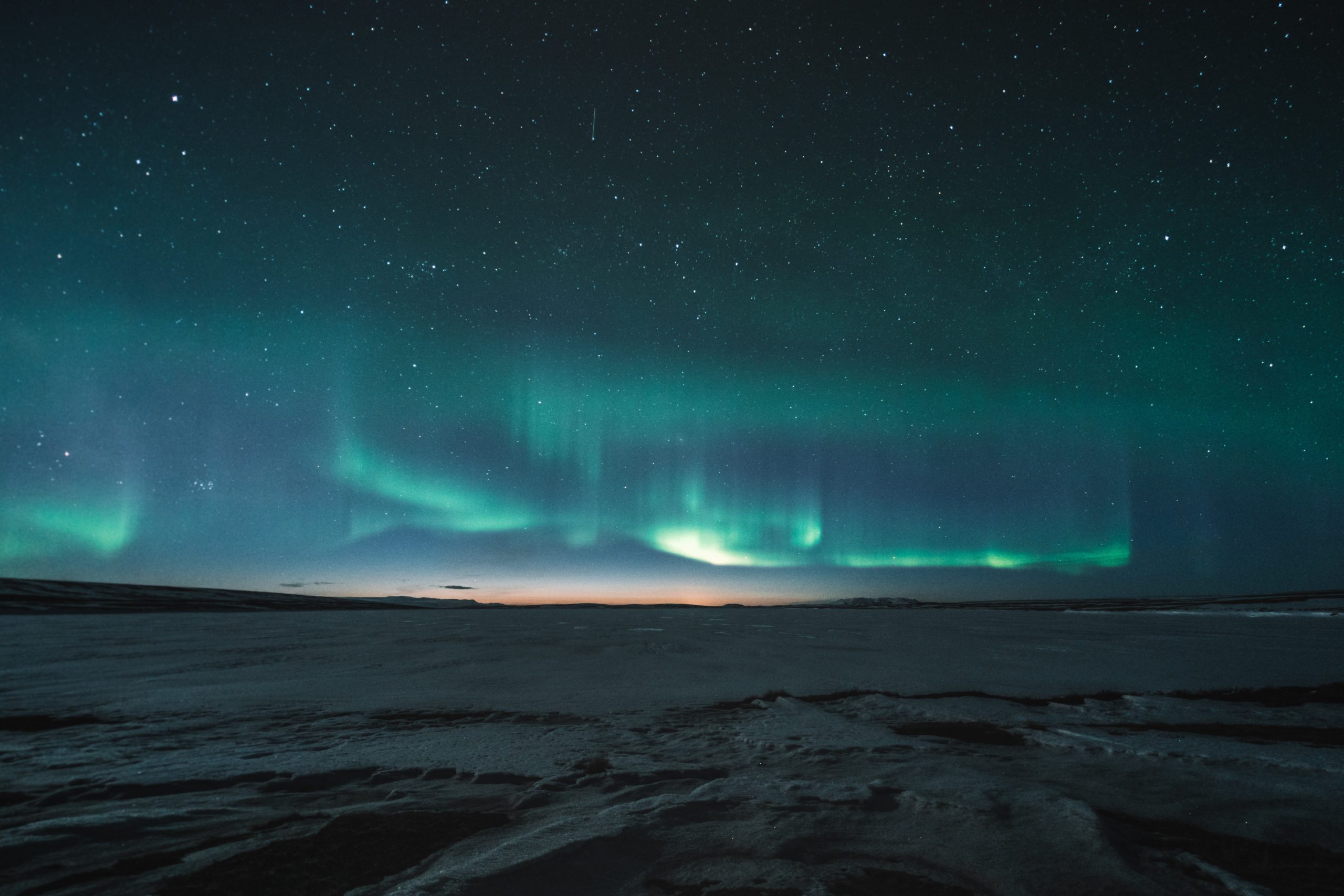When Is The Best Time To Visit Iceland?
Text by Sonia Nicolson
When’s The Best Time To Visit Iceland, Summer or Winter?
First off, of course you can travel to Iceland all year round as there really isn’t a high season anymore, but one of the main questions we get asked is wether to visit Iceland in the summer or winter. Weather is a big factor in planning a trip to Iceland. The weather here is incredibly unpredictable and it is commonly said that “if you don’t like the weather, wait 5 minutes”. You can often experience both summer and winter weather in one day, and in any season, so it’s advised to expect the worst and hope for the best.
Many travellers come to Iceland in summer as they feel winter will be too challenging but winter is slowly becoming as popular so which is better? It’s a hard question to answer as both seasons have a lot to offer, so instead of recommending one, here are a few highlights for each season to help can decide.
WINTER – A Winter Wonderland
Let’s start with winter (October – April), winter in Iceland is so different from the soft green mossy landscapes of summer (June – August). This otherworldly landscape is covered in a white blanket of snow with stark contrasting black lava pecking through. Both are beautiful and should be experienced if you are lucky enough to travel here more than once.

Snow, Sunsets and Frozen Waterfalls
In winter the days are short with sun rising at 10:45 and setting at 16:00. The sunsets are stunning with pink, yellow and orange glowing wisps across the afternoon sky. You will probably see some of the most incredible sites set with a wonderful wintery wonderland backdrop. Frozen waterfalls are just stunning but be careful as they can be very slippery and dangerous. If there is a ‘no access’ sign, please respect this as it’s there for your own protection.

Northern Lights
The first and more obvious reason to visit in the winter months is for the Northern Lights. This breathtaking natural phenomenon can only be seen in winter, when it’s dark and the sky is clear. The rule is that if you can see the stars then you will have a good chance of seeing the Northern Lights. The best time to see the Aurora is from 1st September, through winter, until 15th April. Make sure to check the Aurora forecast for activity levels, there is a scale of 0-9 with the most common activity is 3-4.
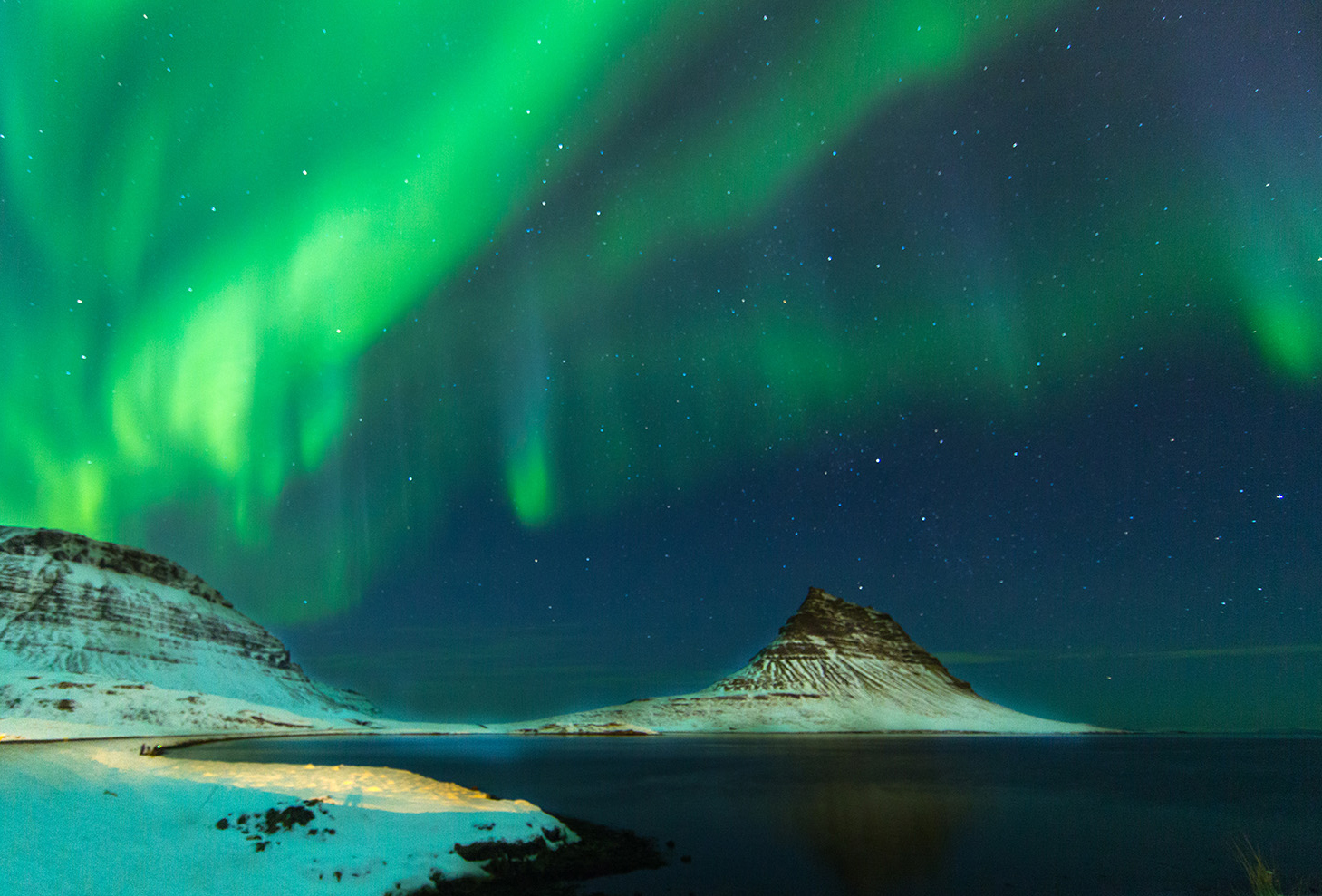
Things To Do
There is plenty to see and do in Iceland, popular winter activities include glaciers hikes, skiing, snow mobile trips, ice fishing and ice cave exploring and winter is when the caves are the most accessible. Many people visit Iceland in the run up to Christmas and to celebrate New Years. People decorate their houses with fairy lights and these are kept on throughout winter, bringing an extra light and magic to the city. There is a small festive market and ice skating rink in downtown Reykjavik too. New Year in Reykjavik is an extraordinary experience with fireworks exploring all around. There are no official firework displays but many locals purchase them and have their own displays. The proceeds from the sale of these fireworks goes towards supporting the Icelandic Search and Rescue teams.
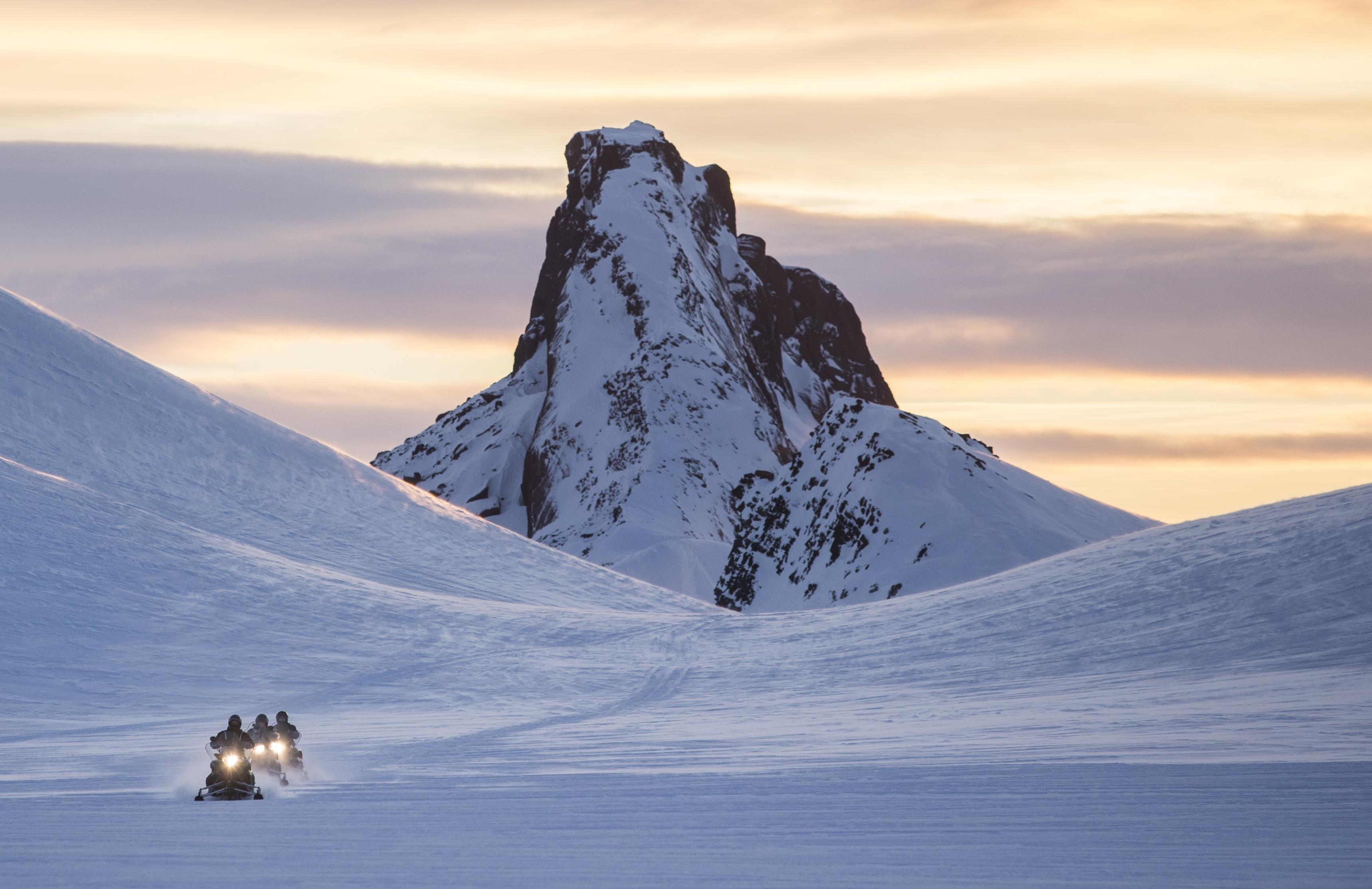
Driving in Winter
Driving in winter can be a little tricky, especially if you are not used to wintery conditions but all hire cars have winter tires to aid in driving on snow and ice. Snow storms are very common in winter and so your journey may be interrupted. The weather can effect airline travel with some flights being delays or cancelled so keep an eye on your flight prior to travel. Also sections of the ring road around Iceland can be effected with road closures throughout winter so it is best to check Vegagerdin for road updates. http://www.road.is/
The downside to visiting Iceland in the winter is that the days are shorter so your sightseeing time is a lot more limited. However the light, though sparse, is beautiful for photography as the sun is low on the horizon so it looks similar to a day-long sunset.

Wildlife
Though Iceland isn’t know as a wildlife destination, you can see birds, Icelandic horses and if you are very lucky you might also spot an arctic fox.

SUMMER – The Midnight Sun
Preferred by the locals, summer provides mild weather and the famous long summer nights. The days are long with sun rising at 03:20 and setting at 23:30 so you will have more light for longer adventures. This can be fun and the endless daylight can merge days into one but it can also be difficult to sleep. Come prepared with a good eye mask and be aware of the time, try to take rests when driving. Obviously the lack of darkness means you wont see the Northern Lights so make sure you plan for the right month to visit.

Waterfalls and Hiking Trails
Most sites are generally more accessible so you can walk right up to, and sometimes behind, the waterfalls. There are some hiking trails which can be accessed all year round but you will have more to choose from in the summer months.
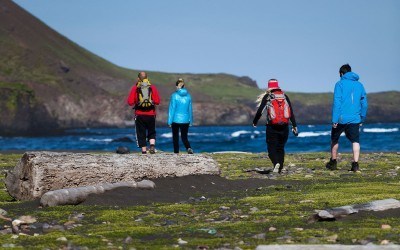
Budget Considerations
If you are travelling on a budget then summer might be more for you. Camping is easier and certainly more pleasant, and hitch hiking is much more common.
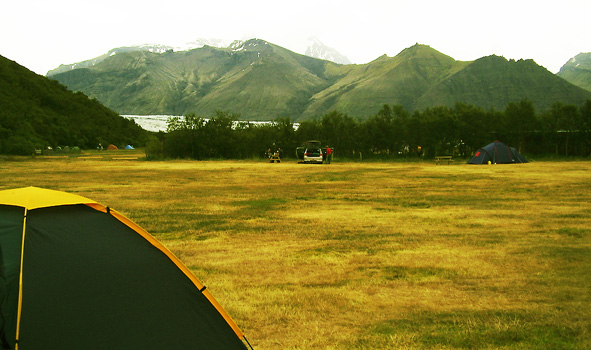
Moss and Lava
The icy blanket of snow melts away to reveal a green and lush mossy blanket over the lava fields. Road become easier to drive and are generally more accessible, with some of the highland roads being opened though it’s never advised to drive off-road. The northern part of the island is much more accessible now.
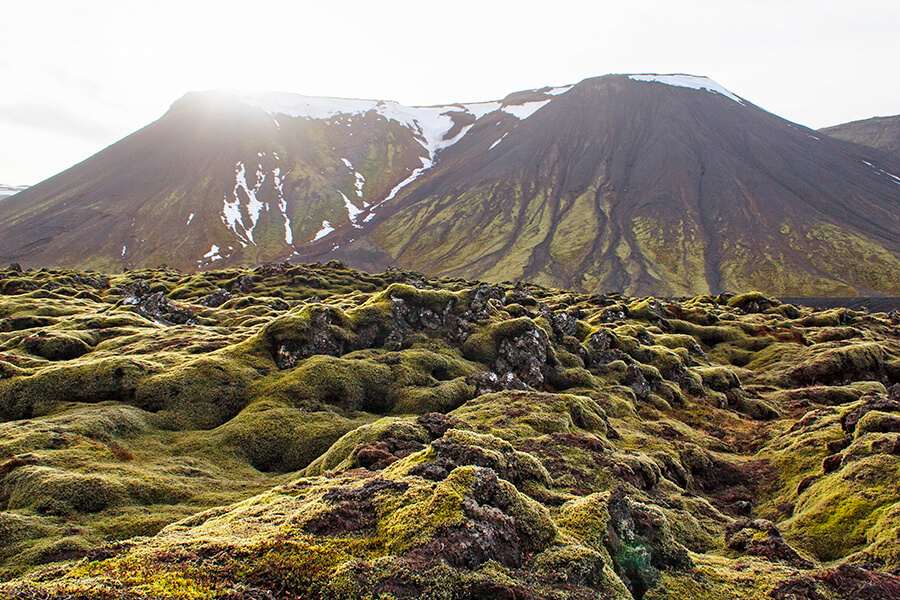
Wildlife
Though Iceland isn’t know as a wildlife destination, you can take a whale watching tour in any season, see Icelandic horses and often spot geese. Puffins are most commonly seen in summer along with other bird.

The Best Time to see Northern Lights in Iceland
Let’s get down to business: When IS the best time to see northern lights in Iceland?
Finding out the best time to see northern lights in Iceland is one of the penultimate quests of every visitor. One of the biggest draws to visit, they are also one of the most difficult activities to plan. Although it would be great to easily pinpoint how and when (and where!) to see them, there are quite a few variables involved in a successful sighting.
Things like season, weather/cloud cover, length of stay/time spent hunting, solar activity, and a bit of luck. We’ll explore these factors a bit more through the article, but to give you the paraphrased rundown:
- Season: mid-August to early April
- Weather: Little to no cloud cover
- Length of stay: 5-7 days (On average, if the weather is cooperating and you are spending most evenings looking for auroras, you may have somewhere around 2.5-3 opportunities to see an aurora. This is of course conditional on if you are willing to move around and if you are here during stormy weather, but typically a week gives you a few chances to try for a sighting.)
- Solar Activity: This far north we can see fairly low activity, as we lay within the 3rd band of the kP chart. In theory, this means that activity needs to occur at a kP 3 level to be visible in Iceland, but due to the rapidly changing development of this forecasting system and the interpretation of data, it does happen often that lower levels of activity are visible here. We’ve gotten lucky on a 0 night before, and so can you! Natural phenomena do tend to be unpredictable, even after years of scientific study.)
Luckily, there are a lot of fantastic things to do in Iceland and it’s always best to think of seeing the northern lights as an added bonus. Depending on where in the season you visit, there are plenty of extra activities to plan your trip around.

What Are The Northern Lights?
First, a little bit of background on the aurora. The northern lights are the result of electrically charged particles from the sun colliding with gaseous particles in the Earth’s atmosphere, causing displays of bright, colorful dancing lights.
They are visible in the magnetic polar regions of the northern and southern hemispheres (they are known as Aurora Australis in the south) and they can range in color from white, green, red, pink, and purple.
Depending on your own personal color processing, these colors can appear differently to you than to your neighbor, which is a curious thing to explore when viewing an aurora with a friend.
These colors are created by the collision of the particles with different gases, and so it is not impossible for rarities like yellow, orange, blues, and reds can occur. Due to color frequency, some of these are harder to see than others.
According to the Northern Lights Centre in Canada, scientific studies have found that the northern and southern Auroras often occur at the same time as mirror images.
This of course means that the Auroras are often happening, even if they aren’t visible to us down on the ground. There are theories that while these occurrences may be happening simultaneously, they may be more like siblings, than twins, in appearance.
The best time to see Northern Lights in Iceland can vary depending on conditions. But because of the length of our light cycle, the good news is that there’s a perfect piece of the auroral season for everyone.

The difficulty here is that a great deal of this activity would only be visible primarily from Antarctica, which does not host a very large population. This means that the qualitative observation of the Aurora Australis is not quite as large as that of the Aurora Borealis, in the north. We are getting closer, though!
In the northern hemisphere, the lights are best seen from Iceland, Finland, Greenland, northern Norway and Sweden, Siberia, the Canadian territories, and Alaska. Thanks to the latitude of the North American continent in relation to the magnetic pole, the lights have been seen as far south as New Orleans!
This is a rare and remarkable thing and is the gift of large solar storms. Here in Iceland, seeing the northern lights is most certainly annual and regular, although still difficult at times to predict.

The Best Time To See The Northern Lights In Iceland
As mentioned early, to see the northern lights in Iceland, it is important first to be here in the correct season, which is mid-August to early April. (It is not impossible to see the lights in early August or mid-April, but typically it would be too bright before and after that timeframe.
It is always good to remember when dealing with a wonder of the natural world, that there are exceptions for every single thing. The aurora may have a season, but that season is only bound to our light cycle. Auroral activity can happen at ANY time, we just lack the proper darkness to view it outside of that time frame.)
And speaking of darkness, guaranteed darkness is the first most important factor. The best season to see the northern lights in Iceland with solid darkness is from September to March, as these are the months where there are full dark nights.
Some sources will recommend December to February, as they are the darkest months with the longest possible window to see the lights, however, these sources often fail to take into account that these months can have the most volatile weather.
This can be a stormy time of year, which often complicates domestic travel and creates a great deal of cloud cover. This is why many aurora hunters prefer Spring (March) and Autumn (mid-August to November), as it is a milder time of year.

The length of time you choose to stay in Iceland is also an important factor. To increase your odds of seeing the lights, it is recommended you stay a minimum of seven nights in the country. The northern lights usually tend to be very active for two to three nights, then low for four to five nights, in ongoing cycles.
Naturally, not everyone can take long trips and Iceland is a renowned stopover destination, but if the northern lights are on your bucket list, it helps to have a few extra nights to explore.
(It’s also clever to start looking early in your trip, as opposed to saving your aurora excursions for a grand finale! Many tours allow a re-try if you have a less than fruitful night, so it is wise to give yourself some time to try again.)
Given that the factors for viewing the aurora have to all be aligned, the longer time you spend in the country, the higher your chances are of seeing them.

The weather is another important factor, but not necessarily for the reason that you may think. Since Iceland is a small north Atlantic island, it is subject to fierce and rapidly changing weather. The old cliché “if you don’t like the weather, wait five minutes” could not be truer of this country.
In order to see the northern lights, the skies need to be very clear. This often coincides with some of our coldest nights, since clear dark weather in Iceland usually means temperatures near or below freezing.
On warmer nights, there is usually precipitation or at least quite a bit of cloud coverage. Many people connect the northern lights with cold temperatures, but this is not required for their visibility.
The aurora happens above our weather system, so these things are only tangentially related. As long as the skies are clear, we can see the show.
Checking the different forecasts in the days leading to your trip to Iceland will give you an idea of your chances of seeing the lights.
Services like the aurora forecast from the Icelandic Meteorological Office are very useful. When you use this forecast, you are looking for the white spaces on the forecast map, instead of the green or colored areas on the map.
These white areas indicate the clarity of the sky, as opposed to layers of cloud cover which are denoted by a color spectrum. You can also see the predicted amount of solar activity on a 0-9 kP scale.
This scale is not always 100% accurate, so it is important to use it as a guideline, instead of an imperative. If you can see the sky in your area, it is worth having a look.
This is of course one of many tools, and these forecasts can all help to lend a bigger picture of what is truly a global event.
When we watch the aurora from one area, we are only seeing a small shard of a planetary occurrence, and so you can imagine how hard it is for a forecast to pinpoint the visibility of such a large thing in such a small area.

As the old saying goes, location location location! People are always looking for the best spot to watch from, and due to cloud cover and the unpredictable movement of auroral activity, the truth is that there is no singular good spot. However, you can make sure that your spot is less affected by the little gifts of mankind.
Once in a while, the northern lights will take Reykjavík by surprise and they are so strong that the city lights don’t matter, but most of the time, it’s best to get away from all the street lights and car headlights.
Taking your visit out of the capital and into the countryside further increases your chances of catching a show, and makes the whole experience a bit more magical.
There are many great small towns to visit around the country with beautiful country hotels and guesthouses, just steps from pure un-modernized nature where there is no light pollution. Fortunately, Iceland is a small place, so it doesn’t take much time to get out of the city light, and into some true darkness.
One of our favorite northern lights hotels in Iceland is the Bubble hotel, on the Golden Circle and the South Coast. We love the Bubbles for their convenient location near popular landmarks,
but also because it gets so incredibly dark there. In one of the comments on Tripadvisor, a client wrote: “I just walked outside of the hotel, just [a] few meters and it was simply pitch dark. So pitch dark I could not find myself.”
To be in complete darkness in the embrace of nature is amazing in itself, but it certainly is a great spot for aurora watching. (And a warm one, as well! Can’t miss the show if you’re in a transparent house!)
When choosing a trajectory to explore, you’ll want to make sure that you have chosen a direction based on cloud cover for that night. Many guides plan their excursions this way and choose their route because of these areas of clarity.
There are quite a few gorgeous towns just off of Route 1 within three hours of Reykjavik that you can head off in the direction of. For aurora hunters headed north/northeast, we can suggest the national park Thingvellir, Borgarnes, Akranes, and even Stykkishólmur.
You can also venture back out towards Keflavík and enjoy the vastness of the Reykjanes peninsula, or head south to the black sand beaches of Vík, the cozy town of Selfoss, of the coastal villages of Eyrarbakki or Thorlákshöfn. No matter where the skies are clear, there will be quite a few stops you can make.
Always take care to make sure that you are pulling over in spaces that are designated stopping points, and not stopping in the middle of the road or in a place where traffic may not expect you. Many accidents occur this way and are not the ideal experience for any hopeful aurora hunter.

Guided Tours vs. Self-Driving: The Showdown
One big question that many people have is whether to go on guided tours or to self-drive around to find the lights. Both of these options have their pros and cons and some people end up doing a combination of both, which can be a cool way to inform your own process.
Guided tours have the advantage of being led by experts and drivers who closely follow the forecasts and have a keen knowledge of the road conditions and terrain. These are people that go out most nights and have quite a bit of experience under their belts.
Depending on the type of tour that you book, they may even have knowledge of the stars, nighttime photography, or the folklore of the northern lights in this area.
(This can also be a really nice experience if you don’t want to do any driving or route mapping. They take care of it for you, and they have to decide the route differently every night!)
Of course, guided tours can be subject to change based on unpredictable conditions, and do cancel if they feel the conditions are not optimal. This can be a challenge for a very tightly planned trip, so try to book your excursions earlier in your vacation to leave time for re-scheduling.
A self-drive can also be a good option, but only if the driver is very familiar with winter roads. Icelandic roads can be very icy as soon as September hits, so it’s important for drivers to be experienced and comfortable in all weather conditions.
It is also very important to follow road regulations and safety precautions given by your rental company and the Icelandic Association for Search and Rescue. Provided you are comfortable with this, building your own driving itinerary to go hunt down the lights can be a very rewarding adventure.
You will have a lot more freedom to hit the road on a whim if you see that the weather conditions are good near you and take on all the activities and sightseeing you want at your own leisure.
Of course, you have to be willing to do a lot more research on your own and be diligent to watch the skies closely, but you can stop to get snacks or go to the bathroom whenever you want! (Not to mention, if you want to stay out until 3 AM, you can! The guided tours typically last around 3 hours on average, so you do command a bit more freedom on a self-drive.)
If you plan to spend a considerable length of time here, combining both guided tours and self-driving can be a really excellent option.
You can stick to the easier routes on your own as you self-drive and have the same freedom to explore at your pace, but you can also treat yourself to a fun-filled adventure led by an expert guide. There are many tours that go to absolutely stunning locations to hunt for the lights, like the Jökulsárlón glacial lagoon or snowmobiling.
One other important thing to consider when coming to see the lights is bringing the appropriate attire. Remember: it will be winter! The key to dressing warmly in Iceland is lots of layers of natural fiber clothing – long underwear, cotton and wool socks, form-fitting shirts, and pants, topped off with insulated wind-and-waterproof outerwear.
If you plan on spending any amount of time outdoors, this will be crucial for keeping you heated inside and out. And don’t forget a good hat, scarf, and pair of gloves! If you forget anything though, don’t worry. Reykjavík’s main shopping street Laugavegur has many great stores where you can buy locally designed outerwear.
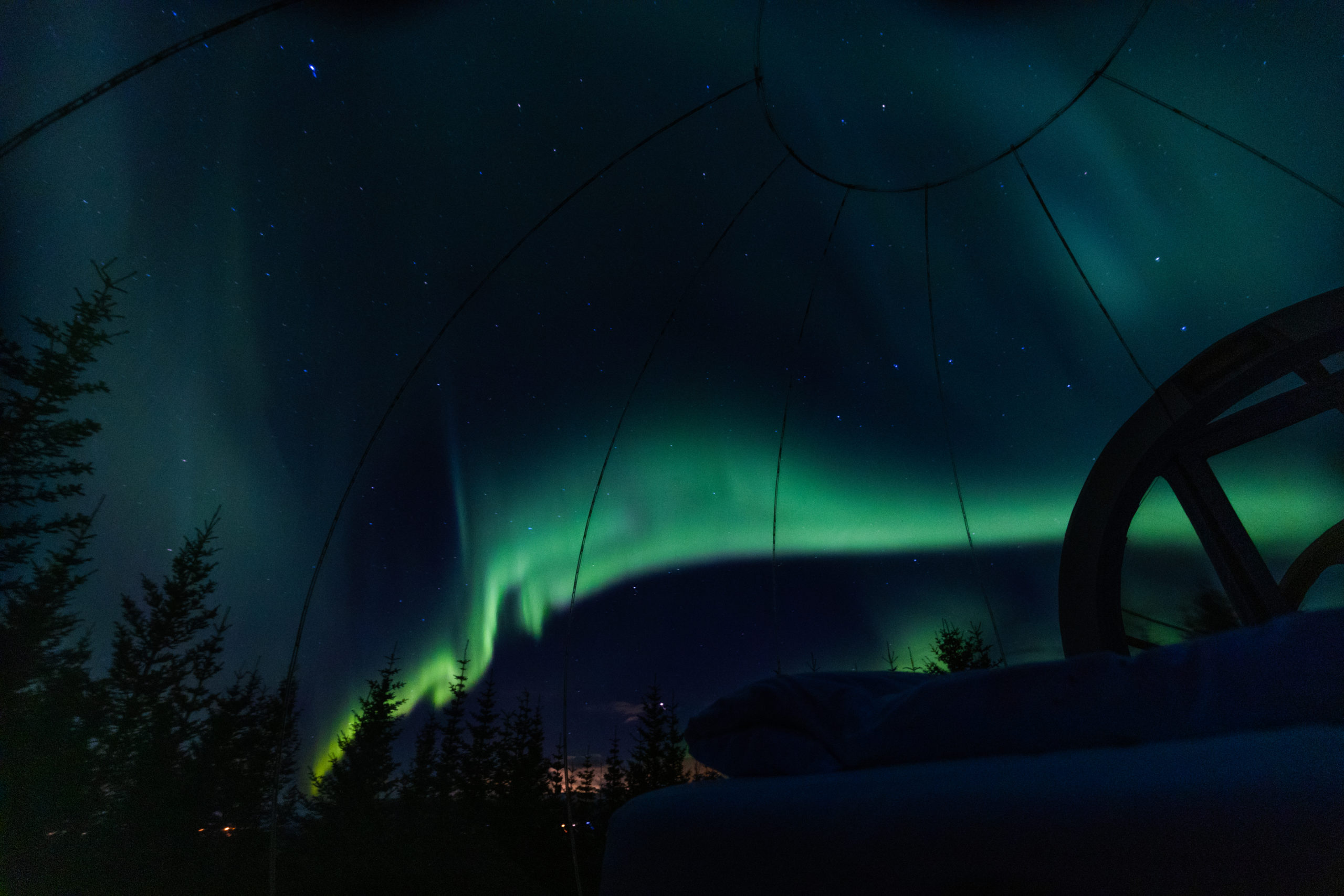
After the lights: other things to do in Iceland
At the end of the day, it’s really crucial to plan your trip around other activities and sights besides the northern lights. There are so many wonderful things to do in Iceland, and with the auroras being as fickle as they are, it would be a shame to not make the most of your visit.
There are all kinds of day trips accessible from the capital area, like the South Coast and Golden Circle routes. Easily done by guided tour or self-drive at all times of the year, these areas hold some of the country’s most notable landmarks.
On the Golden Circle route, you’ll see the Gullfoss waterfall, the original and eponymous Geysir, and the continental rift at Þingvellir national park, the first site of Iceland’s parliament.
Another favorite is the South Coast drive, home to the Seljalandsfoss and Skógarfoss waterfalls, the Reynisfjara black sand beach with its basalt column wall, and the beautiful seaside town of Vík. This little town rests sleepily under the volcano Katla, and if you visit in the summer, you may see the visiting Puffins!
For a longer drive along the south coast, continue on to see the Jökulsárlón glacial lagoon, where icebergs that break off of the great Vatnajökull glacier and float into the sea, before resting for a moment on the Diamond Beach. Each region of Iceland is home to otherworldly natural wonders, so make sure to see what you can while there’s light!
There is also a lot to see and do in the capital city of Reykjavík. Make sure to visit the Reykjavík Art Museum, a network of three separate centers housing a vast array of styles and eras of classic and modern art, each one dedicated to a famous Icelandic artist.
The National Museum of Iceland displays a fantastic permanent collection that beautifully transports you through the history of the country from the time of settlement until the present day. It also holds many temporary exhibits ranging from textile art to archeological reconstructions.
You can also indulge yourself with local cuisine, going to any number of marvelous restaurants specializing in some of Iceland’s best produce – lamb, lobster, and fish.
Then there is, of course, the city’s famous nightlife and bar scene that is not to be missed on weekends. The city goes from a quiet seaside town to an all-out rager on Friday and Saturday nights, and there are dozens of bars in the downtown area to suit every taste and fancy. Take in a bit of everything and you are sure to have a fabulous stay in this country, northern lights or not.
So now you’re ready to plan a trip! Remember the big factors: season, weather/cloud cover, length of stay/time spent hunting, and solar activity. (And of course the smaller details, like having the right gear, planning yourself some extra fun, and getting out of all that light pollution.)
With all these taken into account, hopefully, you will look up and be dazzled by the beautiful dancing lights. And if they don’t show themselves, you will still have had a great adventure in Iceland.



